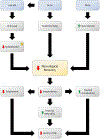Economic impact of traumatic spinal cord injuries in the United States
- PMID: 33869674
- PMCID: PMC8052100
- DOI: 10.20517/2347-8659.2019.15
Economic impact of traumatic spinal cord injuries in the United States
Abstract
Individuals having sustained traumatic spinal cord injury (TSCI) in the United States are living longer as compared to historical trends, thanks to an ever-evolving understanding of the nature of this injury. Despite this, multiple barriers to care for TSCI patients remain including variations in government-issued veteran insurance, privatized insurance, and among uninsured individuals. The United States alone experiences 12,000 new TSCI cases every year, many of these are found to occur in a growing proportion of elderly individuals. It is crucial to understand both the short-term direct costs as wells as the long-term rehabilitation costs required by these TSCI patients. The lifetime financial burden for those having sustained a TSCI can be immense for patients, insurance companies, and hospital systems alike. Among those with TSCI, re-hospitalization rates are high, leading to increased healthcare resource utilization within this specific patient population. Costs can quickly balloon into hundreds of thousands of dollars and cause a profound financial burden for these patients. This review article seeks to communicate an understanding of the current financial landscape surrounding TSCI patients. The authors will also examine the costs of acute emergency room surgical care such as American spinal injury association grade, hospital length of stay, as well as the timing delay between injury and surgical decompression. Long-term costs associated with TSCI such as rehabilitation, care of secondary comorbidities, and post-injury employment prospects will be examined as well. These costs will be framed from the patient's perspective as well as from both the hospital and insurance company's perspectives. It is hoped a complete understanding as to what makes TSCI such a medically and financially burdensome injury will allow for improved healthcare resource utilization in this population.
Keywords: American spinal injury association grade; Traumatic spinal cord injury; healthcare resource; hospital length of stay; post-injury employment; rehabilitation.
Conflict of interest statement
Conflicts of interest All authors declared that there are no conflicts of interest.
Figures



References
Grants and funding
LinkOut - more resources
Full Text Sources
